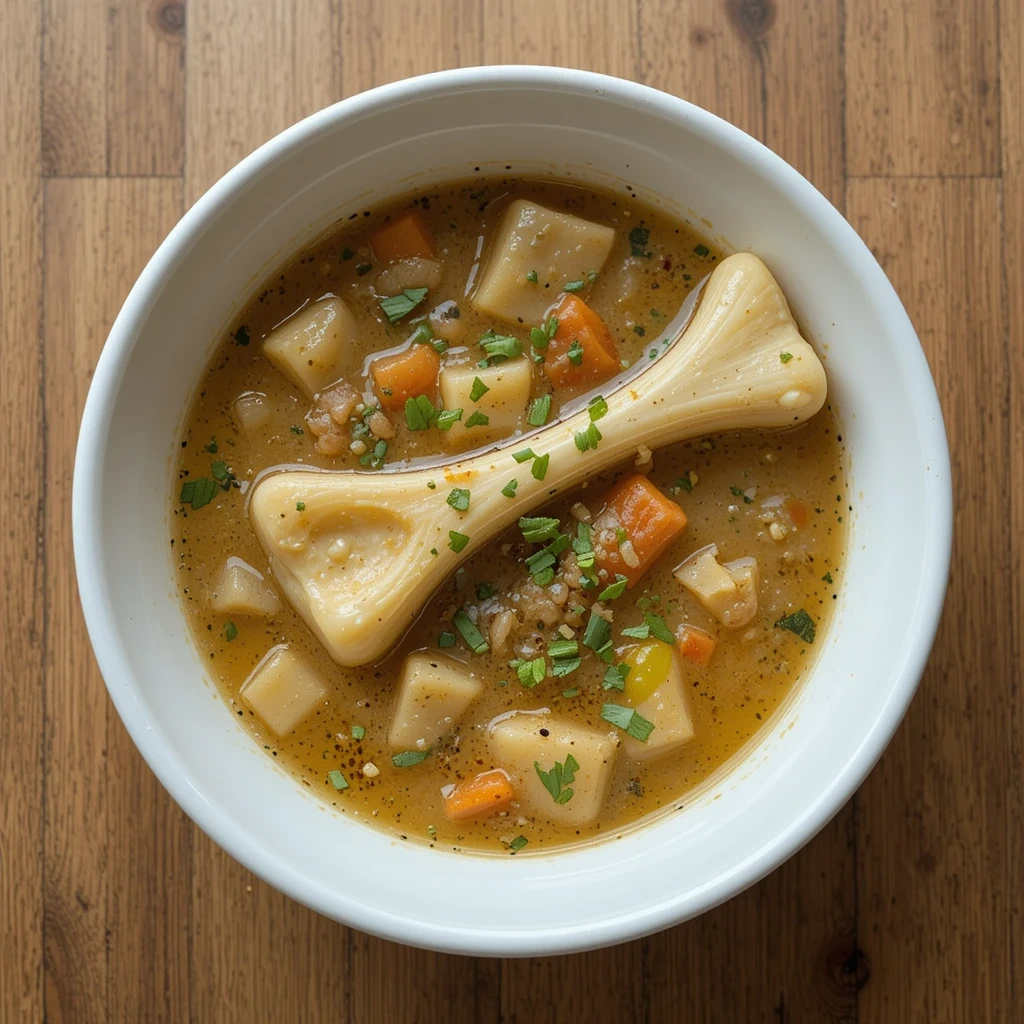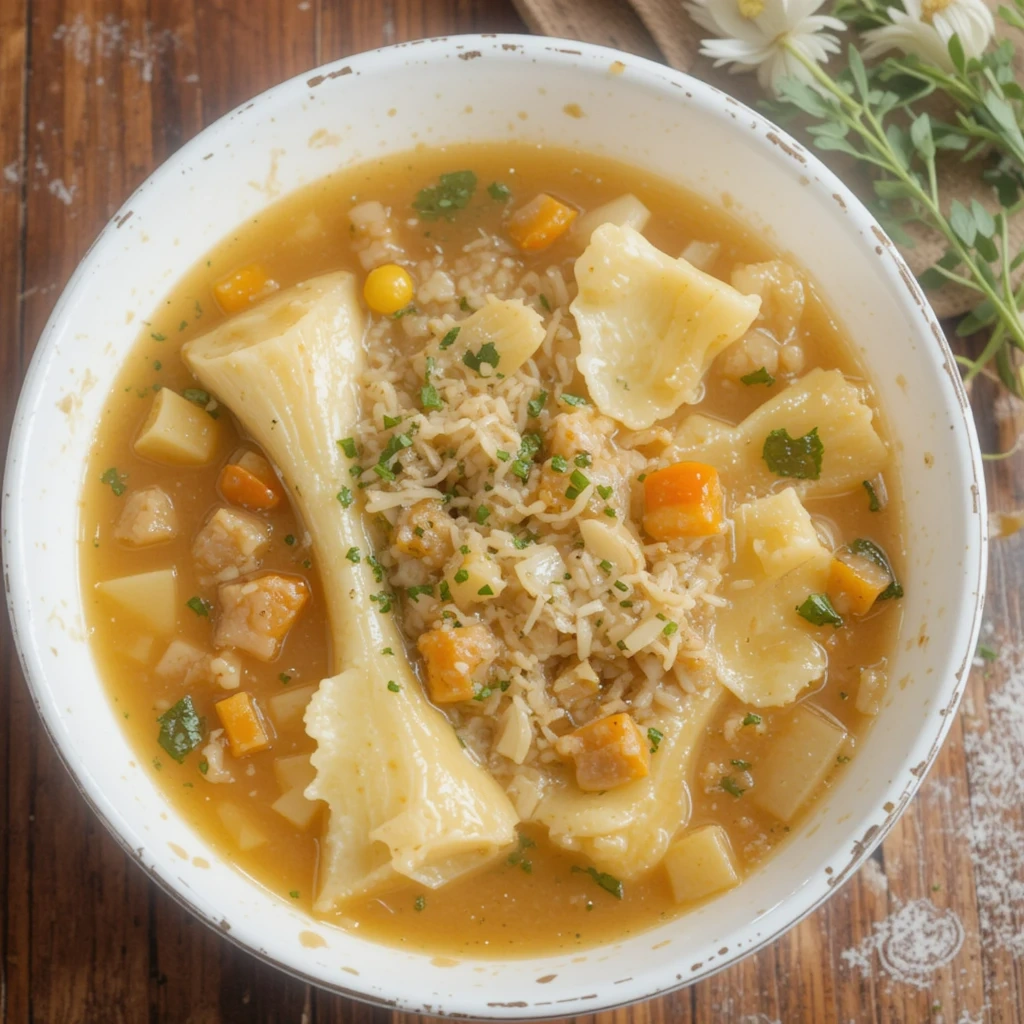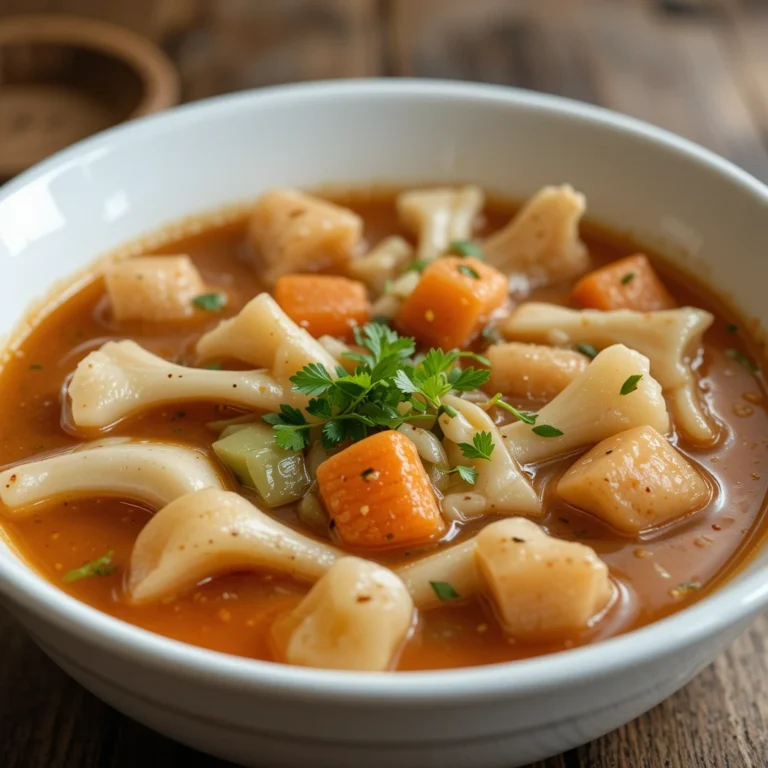Soup bones are the foundation of many rich, flavorful broths, offering a wide range of nutritional benefits and culinary possibilities. From crafting homemade bone broth to creatively using it in various dishes, soup bones are a treasure in the kitchen. In this comprehensive guide, we’ll cover everything you need to know about soup bones, including their types, health benefits, preparation methods, and recipes to make the most of them.
What Are Soup Bones?
Soup bones are bones derived from animals—commonly beef, chicken, pork, or fish—used to create broths through a slow simmering process. They often include elements such as:
- Marrow: Found in larger bones like beef femurs, offering a creamy texture and nutritional value.
- Cartilage: Contributes to the gelatinous texture of the broth and provides collagen.
- Connective Tissue: Rich in nutrients and adds depth to the broth.
Unlike meat cuts, soup bones are not the main attraction of a meal but are integral to enhancing the flavors and nutritional value of other dishes. They are often inexpensive and can be sourced from butchers, farmers’ markets, or even saved from meals where bones are present.
Types of Soup Bones
Beef Bones
Beef bones are a popular choice for making hearty, nutrient-dense broths. They are rich in marrow and collagen, making them ideal for slow-cooked soups and stews.
- Knuckles and Shanks: Excellent for creating gelatin-rich broths. These bones are often used in traditional recipes like pho or beef stew.
- Marrow Bones: Filled with creamy, nutrient-dense marrow, ideal for soups and roasted preparations. Roasting marrow bones before simmering enhances their flavor.
- Oxtail: Adds a robust flavor and richness to soups and stews. Oxtail is particularly prized for its tender meat and gelatinous texture.
Chicken Bones
Chicken bones are versatile and perfect for lighter broths. They are widely used in many cuisines due to their mild flavor and accessibility.
- Frames (Carcasses): Provide a light, versatile broth. These are often leftover from roasted or rotisserie chickens.
- Feet: Rich in collagen, resulting in a thick and nutritious broth. Chicken feet are a staple in Asian cuisines for their gelatinous quality.
- Necks and Backs: Great for extracting flavor without being overly heavy. These bones are often used in chicken noodle soup or as a base for sauces.
Pork Bones
Pork bones add a slightly sweet and savory flavor to broths. They are commonly used in Asian and Latin American cuisines.
- Knuckles: A good source of collagen and ideal for making hearty broths. Pork knuckles are often used in ramen or split pea soup.
- Spare Ribs: Provide a slightly sweet, flavorful base for soups. These bones are often used in pozole or other pork-based soups.
Fish Bones
Fish bones are perfect for light, delicate broths. They are commonly used in seafood dishes and quick-simmering broths.
- Heads: Packed with flavor and nutrients; ideal for light, delicate broths. Fish heads are often used in dishes like bouillabaisse or fish head curry.
- Carcasses: Perfect for quick-simmering broths. Fish carcasses are often used in seafood chowders or as a base for sauces.
Each type of soup bone has unique properties that make it suitable for specific recipes. Choosing the right bones will depend on your desired flavor and nutritional goals.
Health Benefits of Soup Bones
Soup bones are not just flavorful; they are also packed with nutrients that offer numerous health benefits. Here are some of the key advantages of incorporating soup bones into your diet:
1. Rich in Collagen and Gelatin
Collagen, found in the cartilage and connective tissues of bones, breaks down into gelatin during the cooking process. Gelatin supports joint health, improves skin elasticity, and promotes gut health by repairing the intestinal lining.
2. High in Minerals
Bone broth is a natural source of essential minerals like calcium, magnesium, phosphorus, and potassium. These minerals are crucial for maintaining strong bones, supporting muscle function, and regulating blood pressure.
3. Supports Immune Health
The amino acids in bone broth, such as arginine, glutamine, and cysteine, have anti-inflammatory and immune-boosting properties. Regular consumption of bone broth can help strengthen the immune system and reduce the risk of infections.
4. Promotes Digestive Health
The gelatin in bone broth helps soothe the digestive tract, making it easier to digest food. It can also help alleviate symptoms of conditions like leaky gut syndrome and irritable bowel syndrome (IBS).
5. Aids in Weight Management
Bone broth is low in calories but high in protein, making it a satisfying and nutritious addition to a weight management plan. The gelatin content also helps you feel fuller for longer.

How to Prepare Soup Bones
Preparing soup bones is a straightforward process, but it requires time and attention to extract the maximum flavor and nutrients. Here’s a step-by-step guide:
1. Selecting the Bones
Choose high-quality bones from a trusted source. Look for bones with plenty of cartilage and connective tissue for a richer broth. If possible, opt for bones from pasture-raised or grass-fed animals for added nutritional benefits.
2. Roasting the Bones (Optional)
Roasting the bones before simmering can enhance their flavor. Preheat your oven to 400°F (200°C), place the bones on a baking sheet, and roast for 30-45 minutes until they are browned.
3. Simmering the Bones
Place the bones in a large pot or slow cooker and cover them with water. Add aromatics like onions, garlic, carrots, and celery for added flavor. Bring the water to a boil, then reduce the heat to a gentle simmer. Let the bones simmer for:
- Beef and Pork Bones: 12-24 hours
- Chicken Bones: 6-12 hours
- Fish Bones: 1-2 hours
4. Skimming the Broth
During the simmering process, skim off any foam or impurities that rise to the surface. This will result in a clearer, cleaner broth.
5. Straining and Storing
Once the broth is ready, strain it through a fine-mesh sieve or cheesecloth to remove any solids. Let the broth cool before storing it in the refrigerator or freezer. Bone broth can be refrigerated for up to 5 days or frozen for several months.
Recipes Using Soup Bones
1. Classic Beef Bone Broth
Ingredients:
- 2-3 pounds beef bones (knuckles, shanks, or marrow bones)
- 1 onion, quartered
- 2 carrots, chopped
- 3 celery stalks, chopped
- 4 garlic cloves, smashed
- 2 tablespoons apple cider vinegar
- 10 cups water
- Salt and pepper to taste
Instructions:
- Roast the bones in the oven at 400°F (200°C) for 30-45 minutes.
- Transfer the bones to a large pot and add the remaining ingredients.
- Bring to a boil, then reduce to a simmer. Cook for 12-24 hours, skimming impurities as needed.
- Strain the broth and season with salt and pepper.
2. Chicken Noodle Soup
Ingredients:
- 1 chicken carcass or 2 pounds chicken bones
- 1 onion, chopped
- 2 carrots, sliced
- 2 celery stalks, sliced
- 2 garlic cloves, minced
- 8 cups water
- 1 cup egg noodles
- Salt and pepper to taste
Instructions:
- Simmer the chicken bones with onion, carrots, celery, and garlic for 6-12 hours.
- Strain the broth and return it to the pot.
- Add the egg noodles and cook until tender.
- Season with salt and pepper before serving.
3. Pork Bone Ramen
Ingredients:
- 2 pounds pork knuckles or spare ribs
- 1 onion, chopped
- 4 garlic cloves, minced
- 1-inch piece of ginger, sliced
- 8 cups water
- 2 tablespoons soy sauce
- 2 packs ramen noodles
- Toppings: soft-boiled eggs, green onions, nori, and sesame seeds
Instructions:
- Simmer the pork bones with onion, garlic, and ginger for 12-24 hours.
- Strain the broth and stir in soy sauce.
- Cook the ramen noodles according to package instructions.
- Serve the noodles in the broth and add your favorite toppings.

Creative Uses for Bone Broth
Bone broth is a versatile ingredient that can elevate a variety of dishes. Here are some creative ways to use it:
1. Soups and Stews
Add depth to classics like chicken noodle soup, beef stew, or lentil soup.
2. Cooking Grains
Substitute water with broth when cooking rice, quinoa, or pasta for added flavor and nutrition.
3. Sauces and Gravies
Reduce bone broth with wine and aromatics to create a rich sauce for meats or vegetables.
4. Nutritious Drinks
Sip warm bone broth as a healthful and comforting beverage. Add herbs or spices for a flavorful twist.
5. Casseroles and Bakes
Incorporate bone broth into dishes like shepherd’s pie, risotto, or savory bread puddings.
Check this Taco Soup Frios Recipe
Advanced Tips for Perfecting Bone Broth
- Roast Your Bones: Roasting caramelizes the bones and deepens the flavor.
- Use Acid: Apple cider vinegar or lemon juice helps draw minerals from the bones.
- Go Slow: The longer you simmer, the more nutrients and flavor you extract.
- Add Herbs and Spices: Tailor your broth to different cuisines by adding ginger, turmeric, or star anise.
- Save Scraps: Store vegetable scraps and leftover bones in the freezer to use in future broths.
FAQs About Soup Bones
1. What is the difference between stock and broth?
- Stock: Made primarily from bones; unseasoned and thicker due to collagen.
- Broth: Includes meat; seasoned and ready to consume as is.
2. Can you reuse soup bones?
Yes, but subsequent batches will have a lighter flavor and fewer nutrients.
3. Is bone broth suitable for vegetarians or vegans?
No, but plant-based alternatives can be made with nutrient-rich vegetables, seaweed, and mushrooms.
4. How can you tell if your bone broth is done?
A good broth will gel when cooled, indicating a high collagen content.
Conclusion
Soup bones are a hidden gem in the culinary world, offering a perfect blend of sustainability, nutrition, and flavor. Whether you’re simmering a pot of broth for its health benefits or adding depth to your favorite recipes, soup bones provide endless possibilities.
Embrace the art of bone broth making, and let the simplicity of soup bones transform your cooking. From soups to sauces, these unassuming ingredients will become a staple in your kitchen. Start experimenting today and experience the nourishing magic of soup bones for yourself!!

